Kouign-amanns are not very photogenic. At least mine weren’t. But what they lack in looks they make up for in ooey-gooey caramelized-sugary, crisp-but-buttery flaky layery flavor. Seriously. Despite the fact that my kouign-amanns were NOT uniform in size and some of the edges were burned, my daughter, at first bite, proclaimed, “You’re not giving ANY of these away!”
From there, our conversation devolved into the best way to eat one — tear away the crispy exterior and save the gooey center for last, or bite into it whole and get all the textures in one fell swoop — and the best way to warm up the leftovers the next day — in the microwave for no more than 10 seconds or in the toaster oven for a few minutes, just enough time to melt the butter and re-crisp the outer layer.
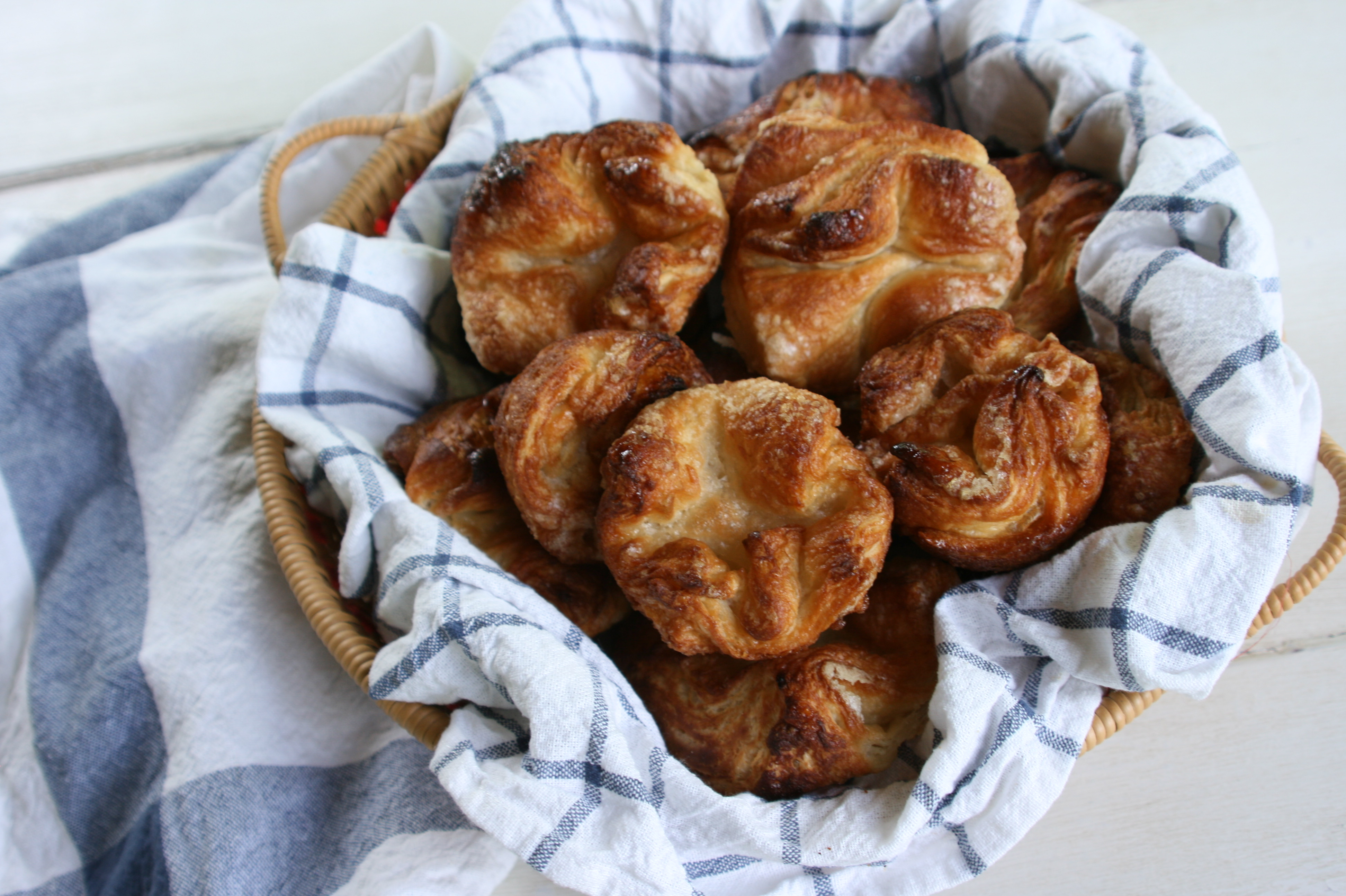
A cross between a croissant and a morning bun, kouign-amann (pronounced queen ah-mon) is, in my opinion, the “queen” of pastries. And I mean that in the chess sense of the word queen — the one with all the power.
This laminated little-piece-of-heaven-on-earth hails from Brittany, in the northwest of France. Translated “butter cake” from Breton, the original kouign-amanns are larger, the size of a full-sized cake pan, whereas the ones we see in bakeries here in the U.S. are generally made in individual-sized muffin tins — perhaps to avoid fights over who gets a bigger piece.
As with many traditional pastries, its origins are murky, but the most popular version is that kouign-amann was invented in 1860 by Yves-Rene Scordia, a baker from the town of Douarnenez, either to save a failed batch of bread dough or to create a cake using leftover dough.
Either way, the technique for making kouign-amann is very much like making croissants: A slab of butter is folded into a rectangle of yeast dough, and then the dough is rolled out and folded into thirds. This is called a turn. The folded dough is then chilled for 30 minutes before being rolled and folded again. This process is repeated three times to create the lamination, or flaky layers. The main difference between making kouign-amanns and croissants is that, for kouign-amann, sugar is sprinkled onto the dough before the last fold, creating a layer of sweet, crispy caramelized sugar on the outer edges of the pastry.
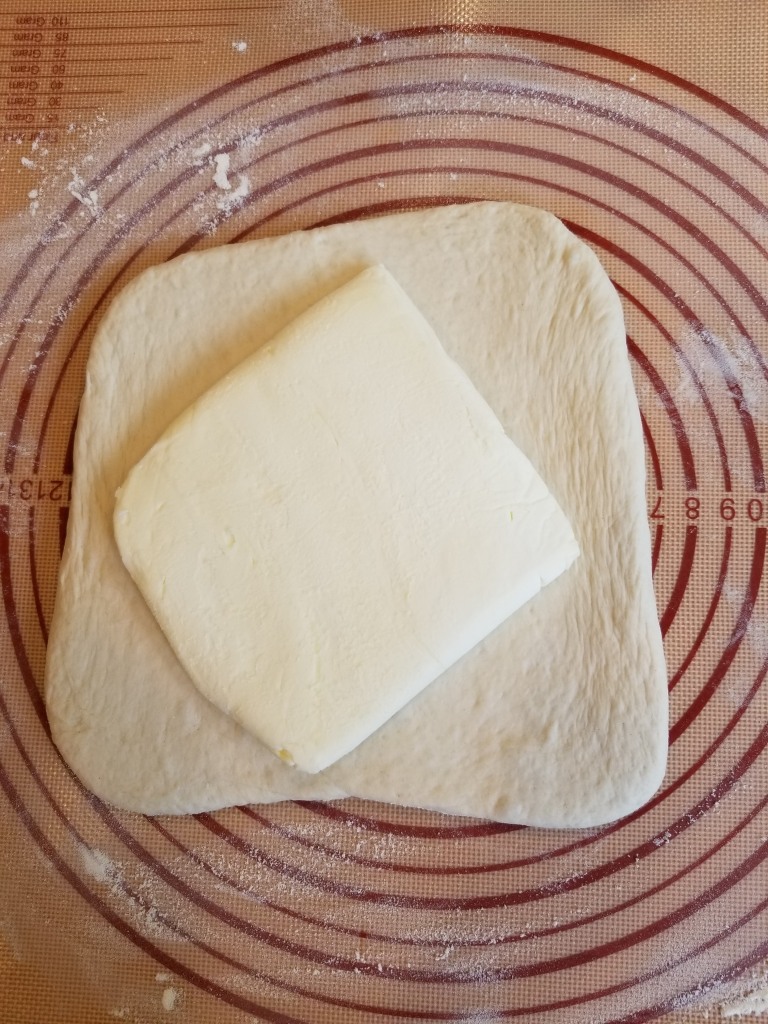
Place the butter on the dough. 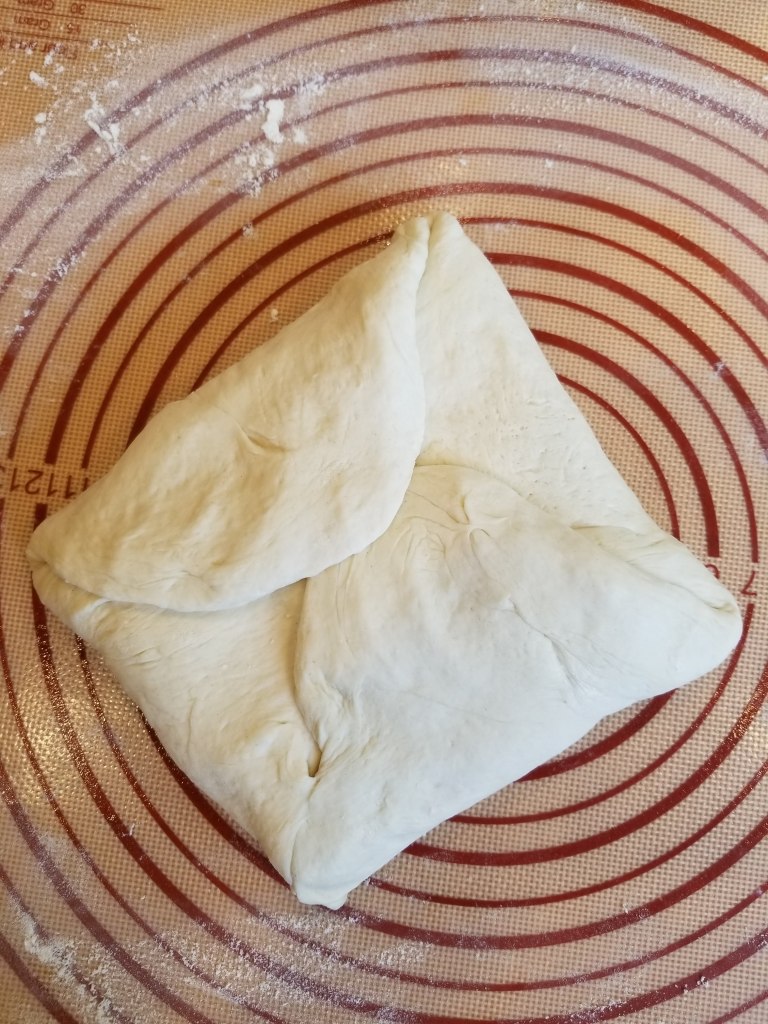
Fold the dough over the butter. 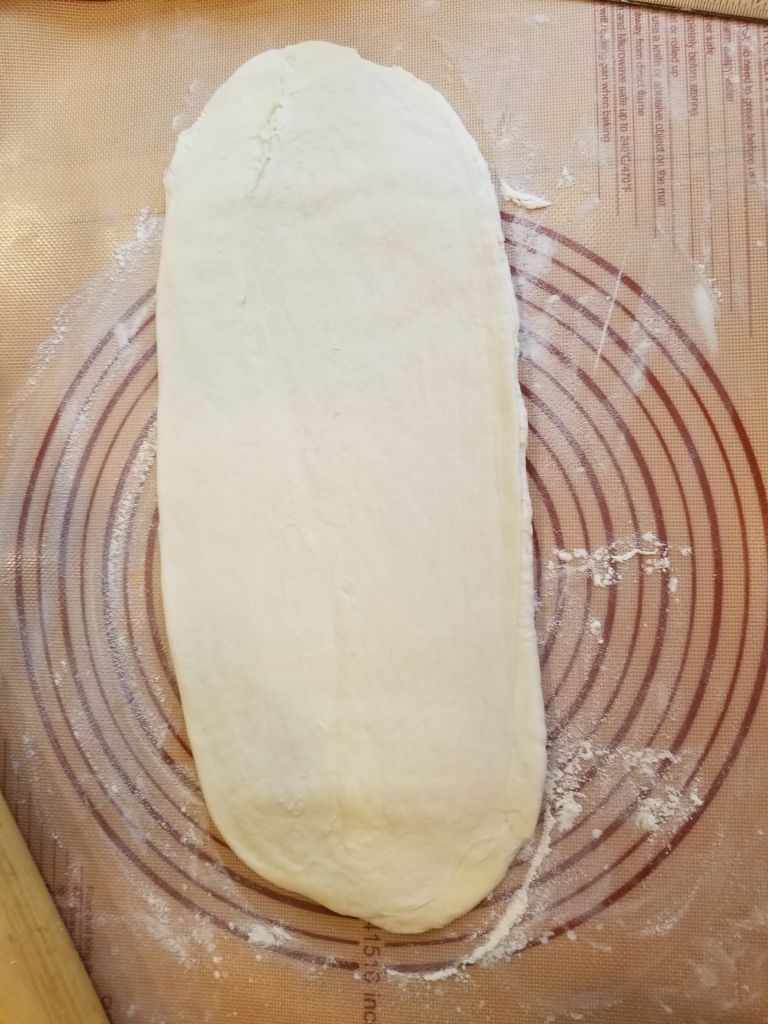
Roll into a rentangle. 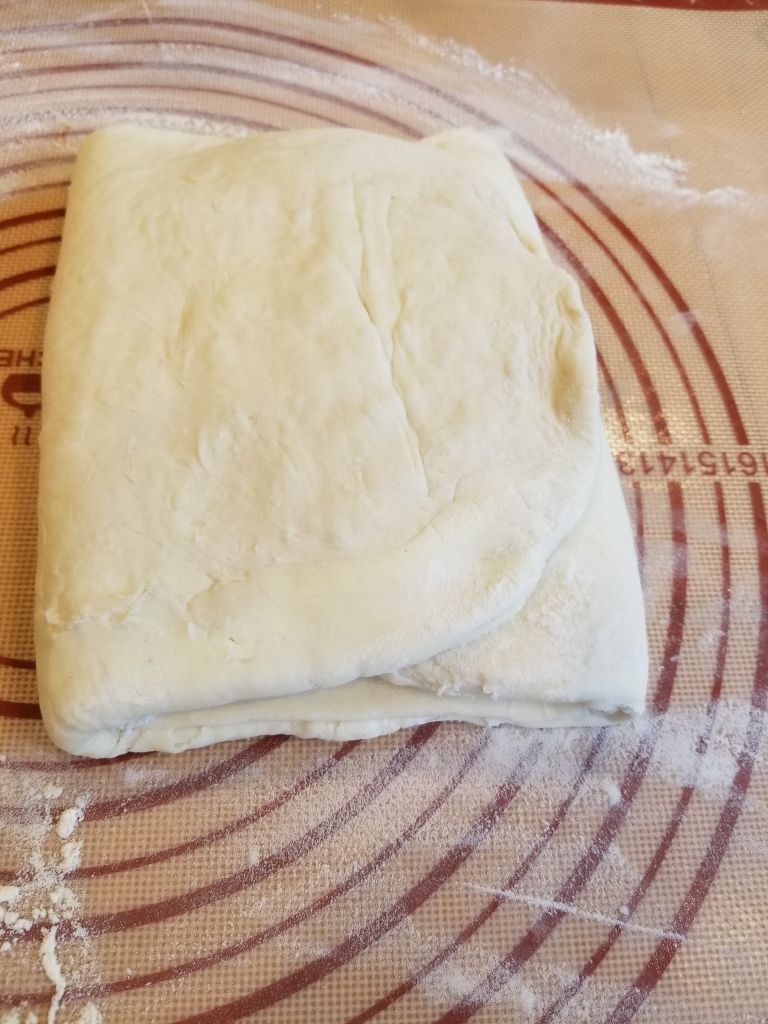
Fold into thirds, chill and repeat. 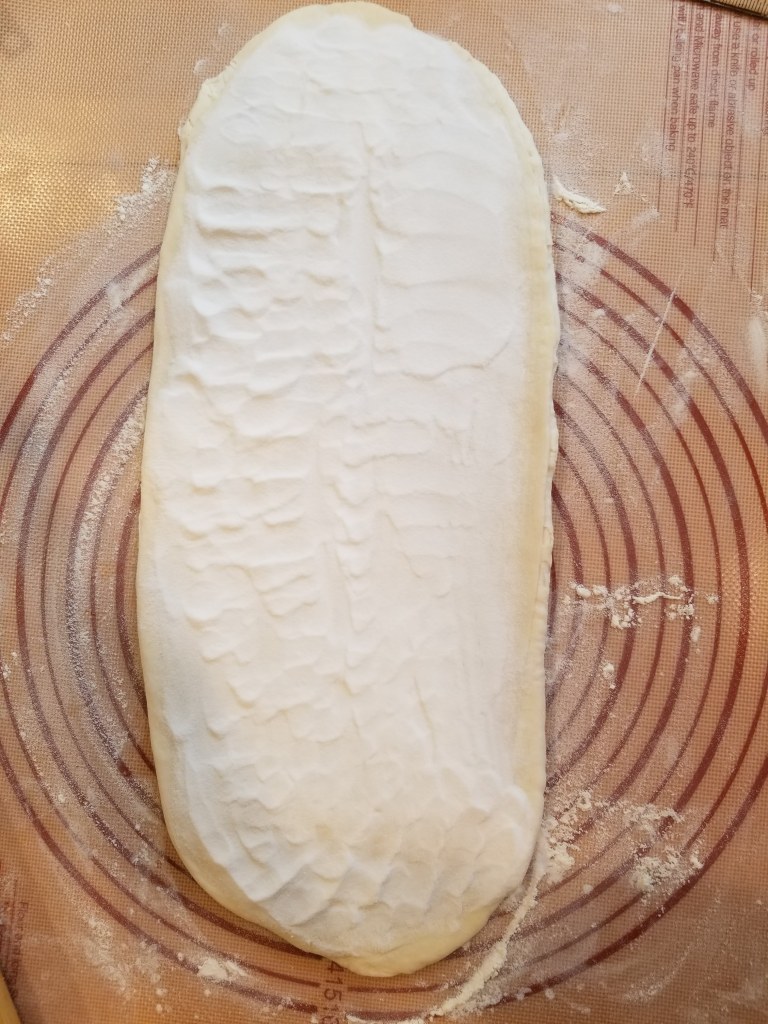
On the third turn, add sugar. 
Roll and cut into squares.
That seemed to be the one detail that was omitted from the recipe given to the bakers in the Great White Tent. Paul Hollywood made it a point to say that if the sugar was folded in earlier, it would simply dissolve into the dough and not form the crispy caramelized coating that is kouign-amann’s signature trait. Nancy added her sugar in the second turn. Luis and Chetna added sugar in all three turns. Richard and Martha did theirs correctly.
For my part, since I had the advantage of Paul’s complete recipe, knowing when to add the sugar wasn’t a problem. The only problems I had, as I mentioned before, were getting them all the same size and making sure I took them out of the oven before the edges caught. Even though I covered them with foil halfway through the baking time, as the recipe suggests, they looked a little burnt. So my advice is to watch them closely in the oven.
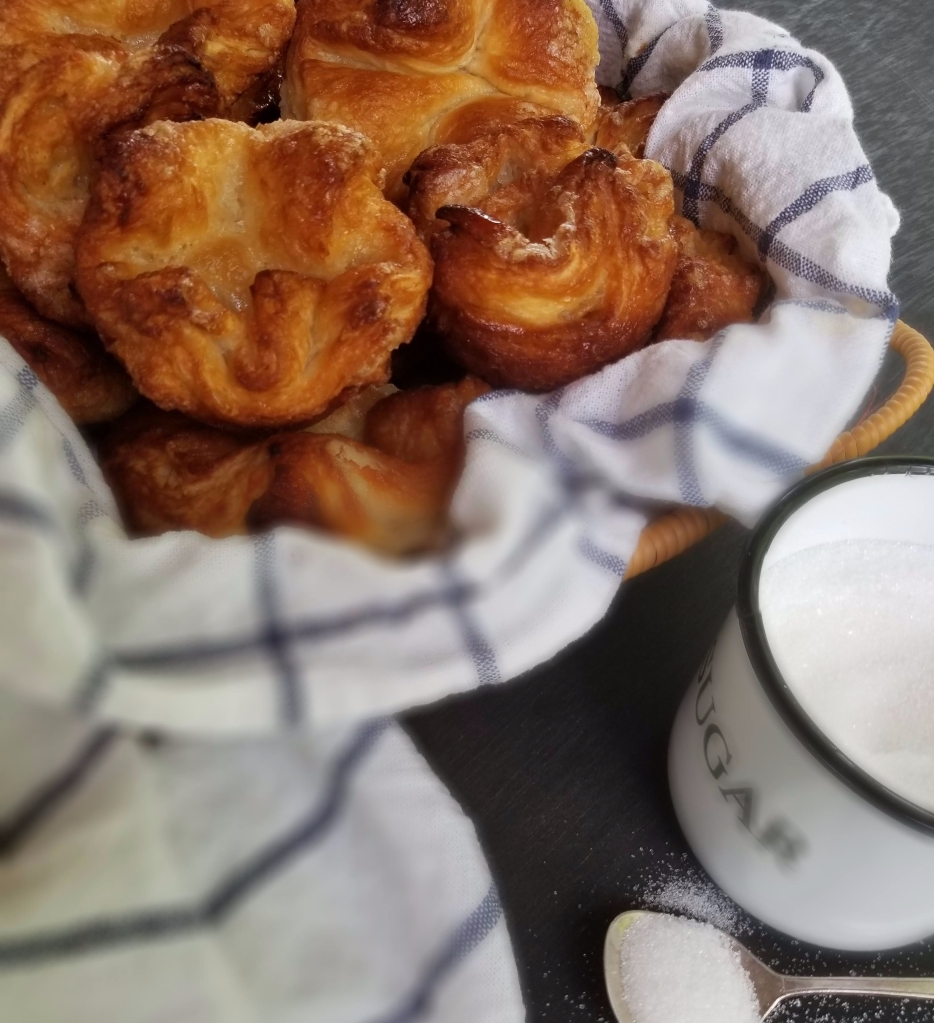
Overall, I wouldn’t consider this a difficult bake. It is time-consuming, but most of that time is spent waiting for the dough to rise or chill. So if you have a leisurely day at home planned, you could easily fit this in between other tasks. The results are definitely worth the time investment, but remember, kouign-amann is best when fresh. So unless you’re baking for a crowd, stick with a smaller batch. (This recipe makes 12.) Your tastebuds may scream for more, but your hips will thank you.

Here is a link to Paul’s recipe, but I have adapted it for American bakers below.

Paul Hollywood’s Kouign-Amann
(Adapted for American bakers)
Ingredients
- 2¼ c. bread flour, plus extra for dusting
- 2 t. fast-action yeast
- 1 t. salt
- 7 oz. warm water
- 2 T. unsalted butter, melted
- 1¼ c. (2½ sticks) cold unsalted butter, preferable in a block
- ½ c. superfine (baker’s) sugar, plus extra for sprinkling
Directions
- Put the flour into the bowl of a stand mixer fitted with a dough hook. Add the yeast to one side of the bowl and the salt to the other. Pour in the water and melted butter and mix on a slow speed for two minutes, then on medium speed for six minutes. (You may need to scrape the dough hook a couple times during the mixing.)
- Tip the dough onto a lightly floured work surface and shape into a ball, then put dough into a lightly oiled bowl. Cover with plastic wrap and let rise for one hour.
- Sandwich butter between two sheets of parchment or wax paper. (If butter is in sticks, pile them close together.) Bash the butter with a rolling pin, then roll out into a 5½-inch square. Wrap in parchment and place in the fridge to keep chilled.
- On a lightly floured surface, roll out the dough to an 8-inch square. Place the slab of butter in the center of the dough diagonally, so that each side of butter faces a corner of the dough. Fold the corners of the dough over the butter to enclose, like an envelope.
- Roll the dough into an 18-by-6-inch rectangle. Fold one third of the rectangle over the middle, then fold the other end of the dough over the folded thirds, like a business letter. You will now have three layers of butter sandwiched between four layers of dough. Wrap in cling film and place in the fridge for 30 minutes. This completes one turn.
- Repeat this process twice more, so you have completed a total of three turns, chilling the dough for 30 minutes between turns.
- While the dough is chilling for the last time, grease a 12-cup muffin tin well with oil. (TIP: I would also suggest placing two strips of parchment in each section, forming a cross and long enough to hang over the edges. This will help you lift the pastries out of the pan when they’re done.)
- Roll the dough into a rectangle as before. Sprinkle the dough with the caster sugar and fold into thirds again. Working quickly, roll the dough into a 16-by-12-inch rectangle and cut the dough into 12 squares. (TIP: To make sure all 12 kouign-amanns are equal in size, trim the edges of the rectangle first. I DIDN’T do this, and because the edges of the dough were thicker, my kouign-amanns were wildly different in size.)
- Gather the four corners of each dough square to the center and, lifting by the corners, transfer it to the muffin tin. This makes it look somewhat like a four-leaf clover (EXAMPLE: https://www.pinterest.com/pin/394346511131036017/). Sprinkle with more caster sugar and leave to rise, covered with a clean tea towel, for 30 minutes until slightly puffed up.
- Preheat oven to 425°F. Bake the pastries for 25-35 minutes or until golden-brown. Check halfway through and cover with foil if they are beginning to brown too quickly. (TIP: Check again 5 or 10 minutes before the baking time is up in case they are already done.) Remove from the oven and let cool for a couple of minutes before turning out onto a wire rack, but don’t wait too long or the melted sugar will harden and glue the pastries to the tin. Use the parchment strips to pull them out of the tin. If necessary, run a knife along the edge to release the caramelized sugar from the pan. (Be careful not to burn yourself on the hot, melted sugar!) Serve warm or room temperature. Best consumed within 24 hours.

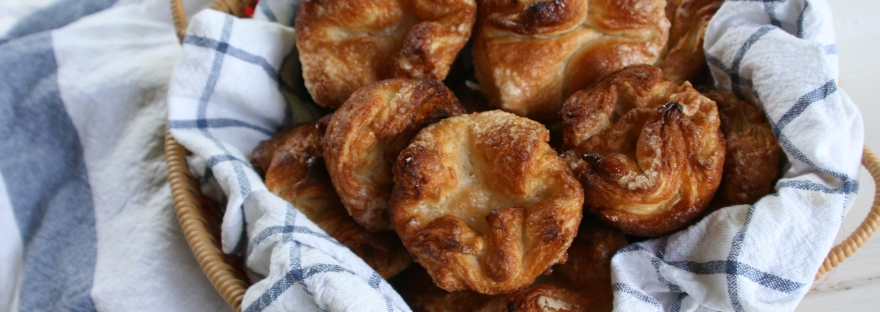

1 thought on “Kouign-Amann”